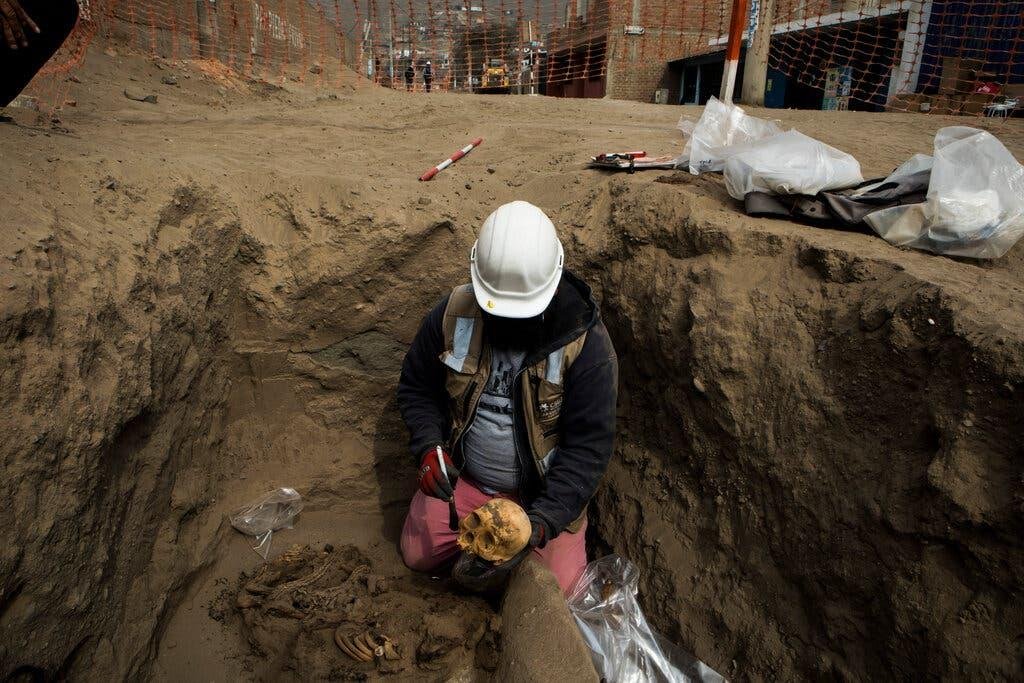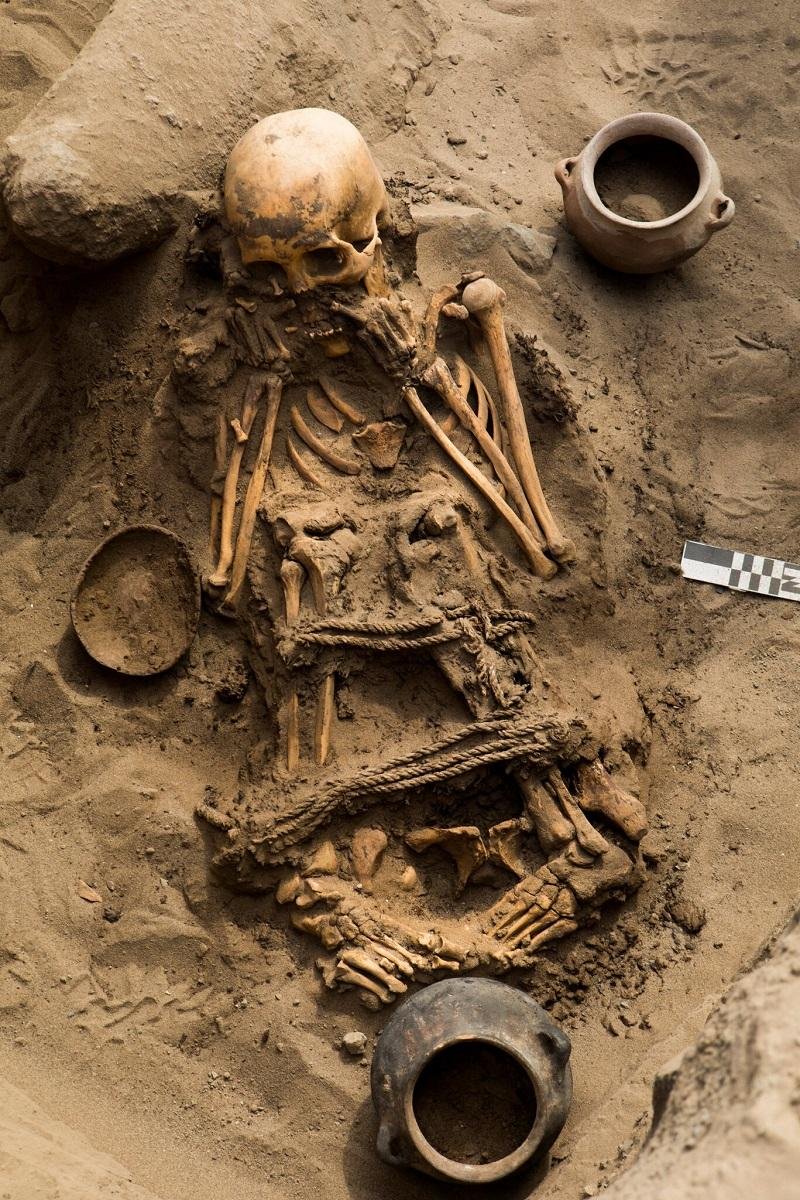Carlos Lalangui was digging a trench to make space for a natural gas pipeline on the city’s outskirts when he discovered fragments of a human skull a dozen inches down in the loosened soil, according to the New York Times.

He stopped digging and informed his supervisor, who called in archaeologists. They discovered the remains of 21 people, eight of them were children, who lived 600 to 800 years ago, said Cecilia Camargo, an archaeologist with the company.
Most had been buried in Peru in a pre-Columbian style, with their bodies bound in a fetal position and bundled in layers of textiles, surrounded by ceramic vessels, plates, pots, and figurines. One of the adults, thought to be a warrior, was discovered lying horizontally on reeds with a star-shaped stone mace; the remains of a 2-year-old were discovered nearby.
The burials were discovered in a residential neighborhood in Carabayllo, a district in northern Lima Province, and served as a reminder of Peru’s seemingly ubiquitous pre-Columbian cultural legacy, which has persisted long after the Spanish conquest decimated the Indigenous people.
Ancient tombs and ceramics have recently been discovered during the expansion of the city’s airport, and construction of a courthouse and a hydroelectric dam in nearby towns. According to Yuri Castro, the culture ministry’s director of archaeological heritage, a Lima resident called culture authorities earlier this year to report funeral bundles he found while doing construction work on his house.
The Peruvian Ministry of Culture has registered over 26,000 archaeological sites across the country. But budget constraints mean that only a fraction can be properly protected, Mr. Castro said.
“Those are the last remaining sites,” Mr. Castro remarked. “With the city’s expansion they’ve gradually disappeared.”
The gas company Cálidda alone has made more than 1,500 archaeological findings in the nine years it has been laying natural gas pipelines across the city’s metropolitan area, said Ms. Camargo, and it employs a team of 30 archaeologists. “3,000 years of history are literally beneath our feet in Lima,” she added.
Before the rise of the Incan empire in the Andes in the 15th century, complex societies learnt to thrive along Peru’s desert coast by irrigating fertile valleys and harvesting abundant Pacific fish stocks. Archaeologists hope that the new find can help shed light on those early cultures.
The coastal region now houses most of Peru’s population, and countless sites have been lost to looting and development.
John Villareal, another laborer at the site, said that when he was a boy, he used to dig up graves at a pre-Columbian burial ground in his village in northern Peru near the city of Chiclayo, working in 10-man teams with other laborers.
“Buyers would come from Chiclayo and we’d sell the pieces for a pittance because we didn’t know what they were worth,” Mr. Villareal explained. He recalled finding and trading masks, shell necklaces, gold pectorals, and ceramic sculptures with erotic themes.
According to Roberto Quispe, an archaeologist at Cálidda, the newly discovered graves were most likely part of a cemetery used for hundreds of years by various groups that farmed along the Chillón River. Archaeologists first became aware of it when they saw aerial photos taken in the 1940s, that revealed the telltale signs of tomb raiding.
Another laborer at the site, John Villareal, said that when he was a boy, he used to dig up graves at a pre-Columbian burial ground in his village in northern Peru near the city of Chiclayo, working in 10-man teams with other laborers.
The objects found in the graves correspond to the Chancay culture, which occupied an area north of Lima from 1,200 to 1,450 A.D., and an earlier cultural development known as Huaura. A ceramic flute, a figurine possibly representing a goddess, and an early version of a cuchimilco, a ceramic figurine with an expression of awe or surprise that was placed in Chancay tombs to accompany the dead.
Archaeologists have also uncovered numerous examples of a 2,000-year-old ceramic style known only as “white on red” in the city center. “It’s been studied so little that researchers still don’t refer to it as a culture,” Ms. Camargo said.
The gas company has opened community museums and exhibits in the districts where findings have been made, so that residents can view them. “You can see how they connect it with their history,” Ms. Camargo said. “That connection, and that interest, is immediate.” — The New York Times.








































